with JUAN CANELA (BAR Project), DAVID ARMENGOL (independent curator), MARIOKISSME and R. MARCOS MOTA Mota (El Palomar), and ROSA LLEO and JOAO LAIA (The Green Parrot).
Lightning Studies: CTCCCs presents Tips to achieve a hygienic body as the third session of Footnotes, a series of discursive annotations across the cultural context of Barcelona. In this occasion, the collaboration between formal institutions and alternative/alternating institutions is viewed in the (mal)practice of sanitation and the images of antiseptic. Smuggling the method of cleaning and tying it into institutions’ shared goals of achieving “public good” and living together in a public sphere, the session draws cases from the artistic context of the city in order to discuss an often neglected link between “the pathogenic” and “the civilized life” as an underlying motivation to attain “public good” or “livable public sphere”. The discussion will begin with the following questions: How do institutions clean themselves? Or, what happens when institutions clean their bodies? Is there a ritual, a habit perhaps? Does the alternative, the independent, the alternating, and/or the civil society become the drainage system of institutional sanitation? Who are labeled as unclean, or what places or bodies need to be cleaned? Ultimately, what contexts do we make and what critical practices are made possible in a sanitary environment?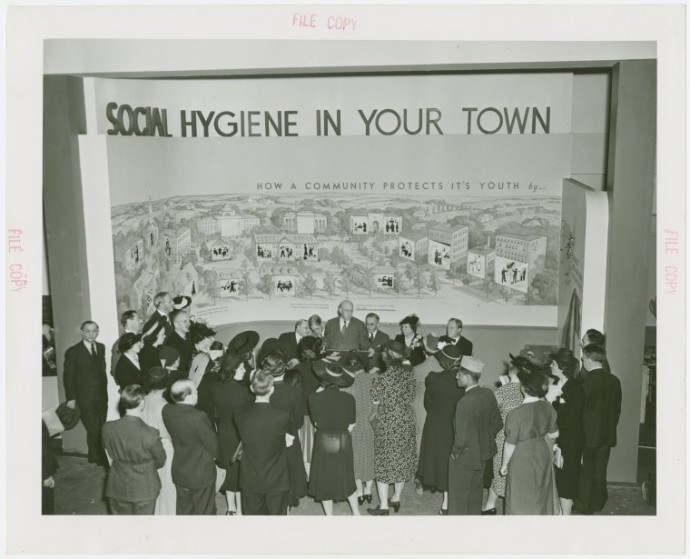
Source: New York Public Library Digital Collection.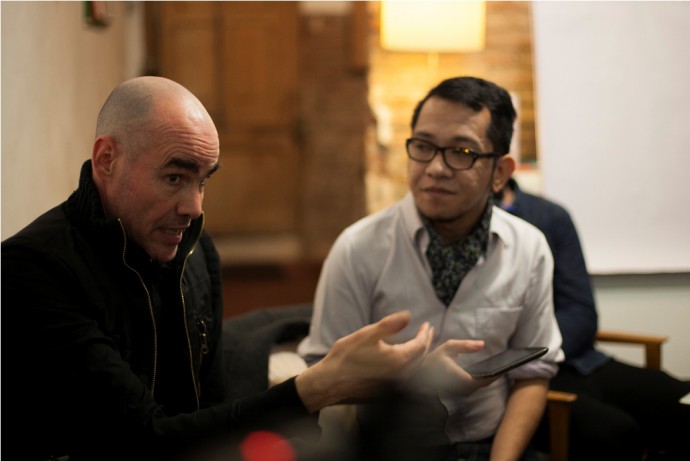
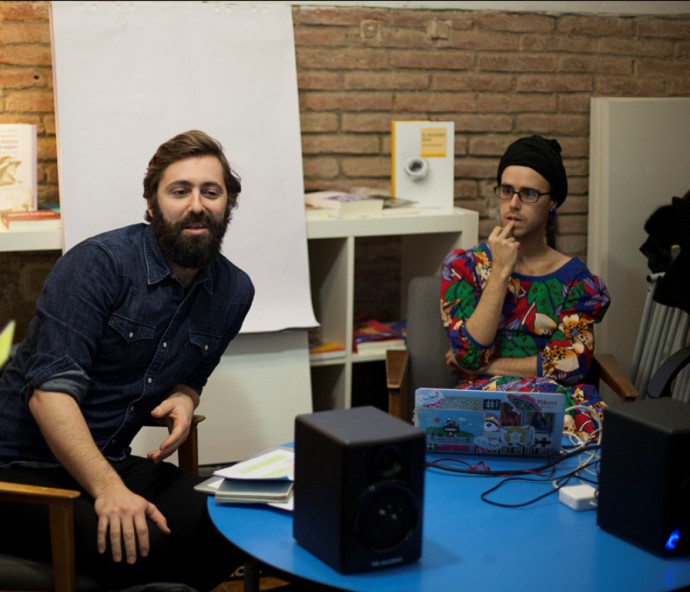
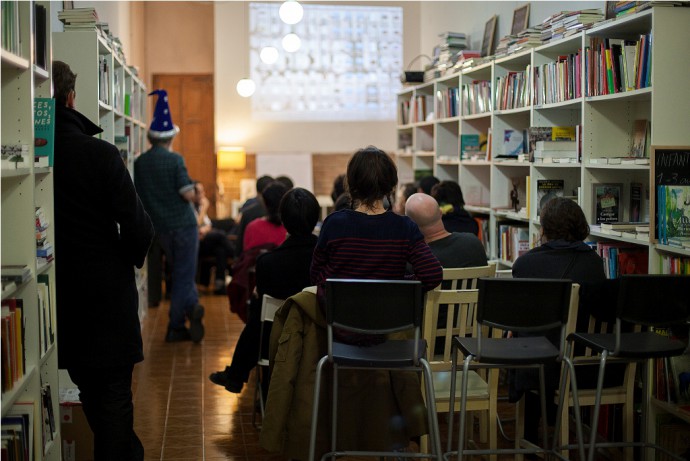
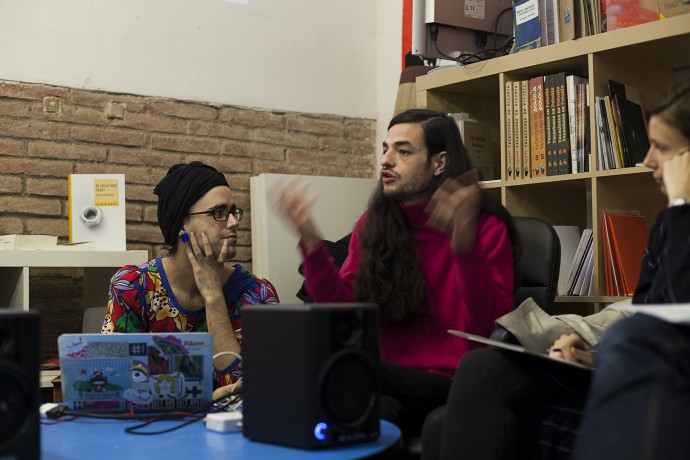 © Hangar, Barcelona 2016. Photos by Marzia Matarese, cc-share-alike.
© Hangar, Barcelona 2016. Photos by Marzia Matarese, cc-share-alike.
---
About the speakers
Rosa Lleó is a writer and independent curator based in Barcelona. She is founder and co-director, together with João Laia, of the small-scale organisation The Green Parrot. Since its opening in April 2014, in a space located in Barcelona, The Green Parrot has hosted a programme of exhibitions, talks and events, and started a series of publications that has brought together artists and other practitioners from the local and international scene such as Marc Camille Chaimowicz, Basim Magdy, Daniel Steegmann Mangrané, June Crespo, among others. Lleó regularly writes for La Vanguardia’s cultural supplement Cultura/s and occasionally for international art magazines such as Flash Art and Afterall online. She also teaches Contemporary Art at the Department of Media Studies at the Pompeu Fabra University of Barcelona. Previously, she had worked as Researcher at the department of Public Programs at MACBA (Barcelona 2013), as a contemporary art editor at ACTAR Publishers (Barcelona, 2010-2012), and researcher and editorial assistant at Afterall (London, 2009). Lleó has curated exhibitions and events at MACBA (Barcelona, 2014), Fundació Antoni Tàpies (Barcelona, 2013), La Casa Encendida (Madrid, 2010) and 176 Project Space (London, 2009). She did an MFA in Curating at Goldsmiths, University of London (London, 2007-2009) and took part on the Curatorlab program at Konstfack University College of Arts, Crafts and Design (Stockholm, 2012).
Footnotes are activities designed as annotations to the development of artistic contributions to Lightning Studies: Centre for the Translation of Constraints, Conflicts, and Contaminations. Dispersed in the city of Barcelona, Footnotes is a series of encounters and meetings with materials, references, cultural agents, and institutions. It works as a discursified waiting list—protruding in the frame of the project, or merely resolving its irrelevance or impossibility to be translated. Practically, its method responds to the question: how do we document and then retrieve something that is marked or registered, but it has neither fully shown itself to us nor formed its connection to our context?
Juan Canela (Sevilla, 1980). Lives and works in Barcelona. Independent curator and writer. Founder and curator of BAR project and founder member of Radiobucket and Azotea. He has curated exhibitions as Ignacio Uriarte: 1&0s at Marco, Contemporary Art Museum Vigo (2014), The old and the new, ADN Platform, Barcelona (2013), Throw a Rock and See What Happens, La Casa Encendida, Madrid (2013); The cosmic space was there…, Bacelos Gallery Madrid/Vigo (2013); editorial project Rage of Action, Espacio Abisal, Bilbao (2011) or Ref.08001, NoguerasBlanchard, Barcelona (2010). At the moment, he is co-curanting with Azotea Lesson 0, a long-term project (sept 2013-sept 2015) for Espai13 Fundació Miró, Barcelona, wth Priscila Fernandes, Rita Ponce de León, Anna Craycroft / Marc Vives / Rivet and Eva Kotatkova; and with BAR project Me and You and Everyone We Meet, a video program for Zumzeig Cine, Barcelona. In 2014 he joined a residency program at La Ene, Nuevo Museo Energía de Arte Contemporáneo in Buenos Aires, Argentina. Following projects for 2015 are Why don´t you call it entropy?, curated with Ariadna Ramonetti for the Edition 0:Contemporary Culture Meeting in Guadalajara México (March 2015); and großiga m’pfa habla horem, a project with works by La Caixa and Macba collections and contemporary artists performances and interventions at Caixaforum, Barcelona (October 2015). He usually writes for art magazines such as A*Desk, Dardo magazine, Exit-Express, SOUTH Magazine and Kaleidoscope Blog.
El Palomar is a project by Mariokissme and R. Marcos Mota and vice versa.
El Palomar is born in an attic, as an over-ground and horizontal space where flight lines are laid. A place from which you would believe “every house has its own Palomar”. A nonprofit place for gathering, exhibition and dialogue. It is embedded as a bastion of speeches, subjects and practices that have difficulty penetrating the official contemporary art sphere. El Palomar wants to revisit this material and defend it as a critical engine and part of the theory and visual imagery corpus. This is a collaborative project between artists that aims to generate a context in the city of Barcelona.
El Palomar aims to see its actions repeated periodically. We consider this project as a process that continually revisits itself. Here you may see works that are exempt from visibility in archives and official selections; as well as works that are already integrated into otherinternational artistic contexts but with no presence in the Spanish context. El Palomar is also intended to become a context backbone tool and a network of critical agents.
---
Footnotes are activities designed as annotations to the development of artistic contributions to Lightning Studies: Centre for the Translation of Constraints, Conflicts, and Contaminations. Dispersed in the city of Barcelona, Footnotes is a series of encounters and meetings with materials, references, cultural agents, and institutions. It works as a discursified waiting list—protruding in the frame of the project, or merely resolving its irrelevance or impossibility to be translated. Practically, its method responds to the question: how do we document and then retrieve something that is marked or registered, but it has neither fully shown itself to us nor formed its connection to our context?


